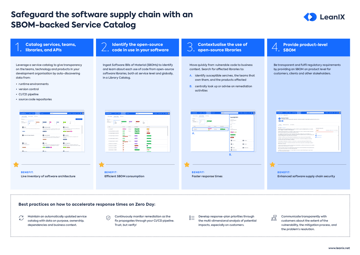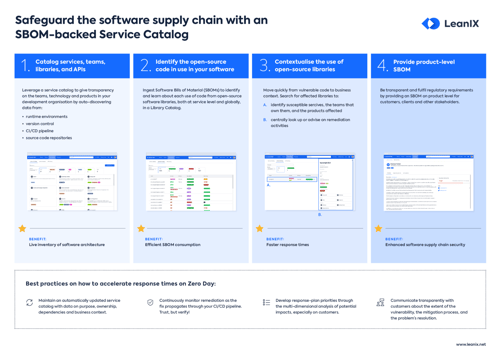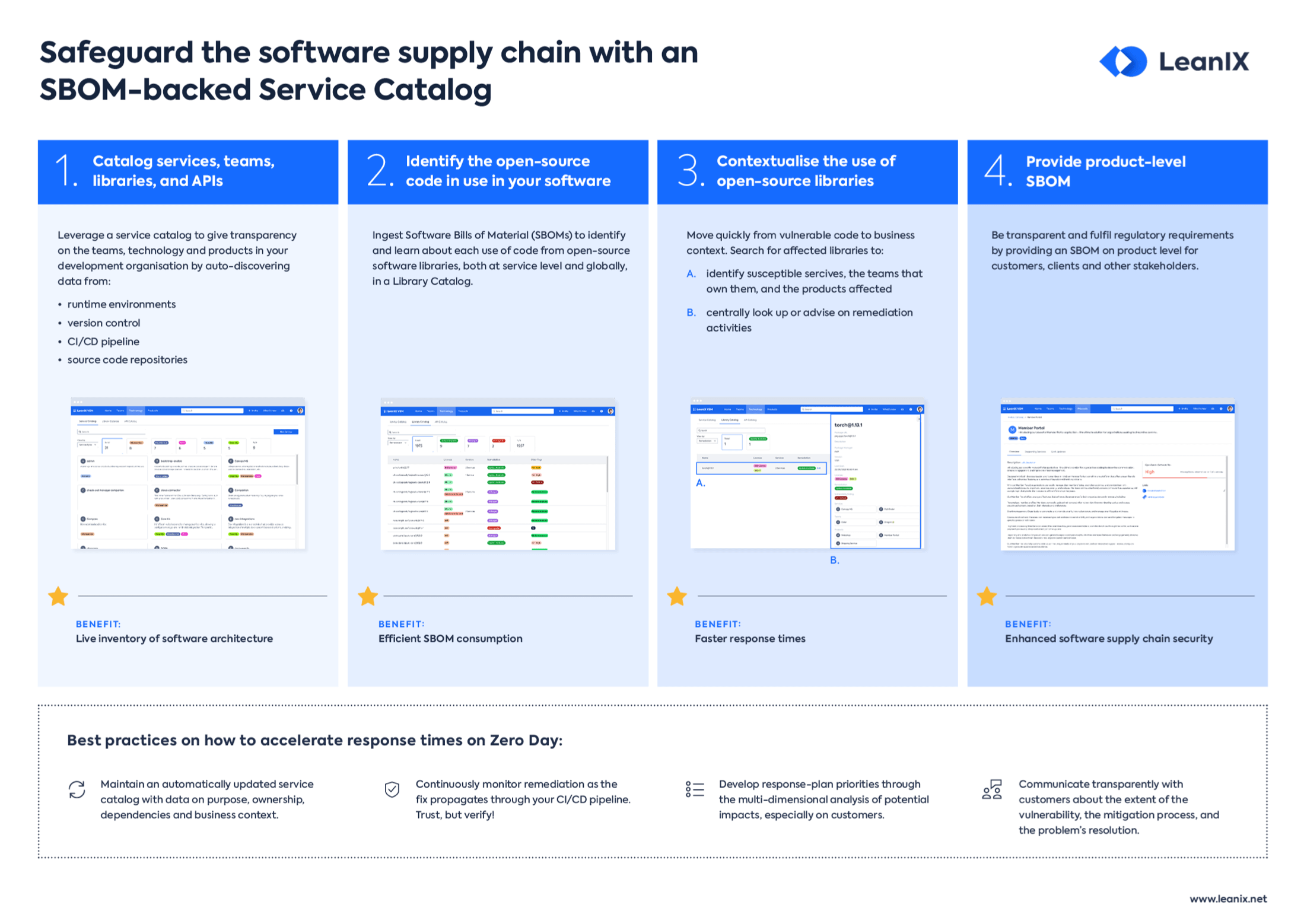[CONTINUED]
Tools and strategies for managing software dependencies
There are multiple options to choose from when you decide to secure and manage your software supply chain through software dependencies. Your selection will be based on your role and the needs of the organization.
To tackle dependencies specifically, here are 7 possible tools and strategies explained:
1. Generate and manage SBOMs
When it comes to constructing trustworthy and secure digital products, implement the shift-left approach to support the software supply chain.
Incorporate the CycloneDX Security Bill of Materials (SBOM) format and enable navigation of SBOMs to strengthen the security of your software supply chain.
As an engineer, you can consume SBOMs efficiently in an easy-to-use interface and filtering capabilities, while as an engineering leader, you can conduct a thorough evaluation of vulnerability exposure across your services and products.
Additionally, leaders can enhance response times by prioritizing and supervising remedial activities in a centralized manner.
2. Perform software dependency analysis
Software dependency analysis is the process of examining the relationships and dependencies between software components. It involves analyzing how different components interact, understanding their dependencies, and identifying potential issues or conflicts.
Dependency analysis helps ensure that the components work together harmoniously, avoiding compatibility problems and allowing for effective integration and maintenance.
3. Perform software composition analysis
Software Composition Analysis (SCA) is a process and toolset that examines the software supply chain and analyzes the composition of a software application.
It focuses on identifying and managing the open-source components and third-party libraries used within a software project.
SCA tools detect and report known vulnerabilities, licensing issues, and compliance risks associated with the software's dependencies.
4. Use a dependency management tool
A dependency management tool is specifically designed to handle dependencies in software projects. It allows developers to define the required dependencies, their versions, and any constraints or conflicts.
The tool resolves and retrieves the dependencies, ensuring that the software project has the necessary components to function correctly.
Dependency management tools work in conjunction with package managers, leveraging their capabilities to retrieve and manage dependencies.
5. Use a package manager
A package manager is a software tool that helps manage the installation, update, and removal of software packages or libraries.
It simplifies the process of managing dependencies by automatically handling the retrieval and installation of required components from repositories.
Package managers ensure that the necessary dependencies are available and properly integrated into a software project.
6. Use a dependency injection framework
A dependency injection (DI) framework is a software mechanism that facilitates the management and injection of dependencies into a software application.
It allows developers to define the dependencies required by a component and automatically provides those dependencies when the component is instantiated.
DI frameworks help decouple components, improve modularity, and simplify testing and maintenance by ensuring that dependencies are easily interchangeable and manageable.
7. Use a build tool
A build tool automates the process of compiling source code, linking libraries, and creating the executable or distributable artifacts of a software project.
Build tools manage dependencies, handle compilation, perform code generation, and execute various tasks required to build a software project.
They provide a streamlined and repeatable process for transforming source code into a deployable software application.
Conclusion
Software dependencies are critical components of modern software development. The use of external libraries helps developers create powerful and innovative applications while reducing development time and cost.
However, it's essential to manage dependencies effectively and stay vigilant against security vulnerabilities that may exist in the dependencies.
Developers and engineering leaders must take adequate measures to address these vulnerabilities as part of their software supply chain security and ensure a robust software development ecosystem.







/EN/Tools/EA-Maturity-Thumbnail.png?width=260&height=171&name=EA-Maturity-Thumbnail.png)

